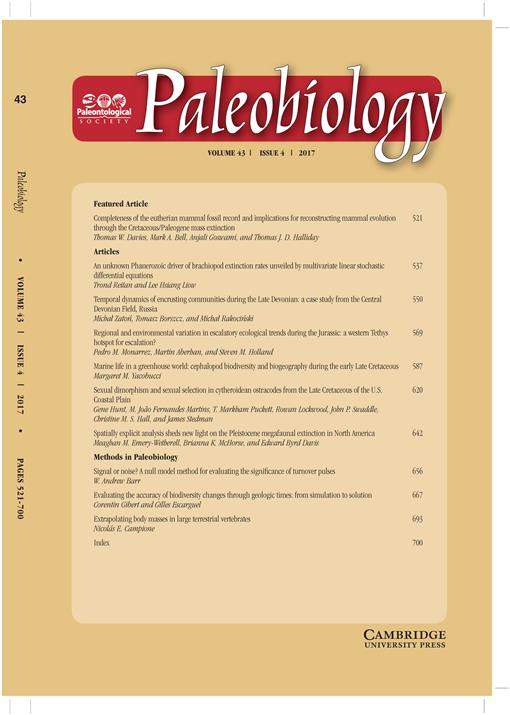In this study we focused on the dynamics of encrusting assemblages preserved on brachiopod hosts collected from upper Frasnian and lower Famennian deposits of the Central Devonian Field, Russia. Because the encrusted brachiopods come from deposits bracketing the Frasnian/Famennian (F/F) boundary, the results also shed some light on ecological differences in encrusting communities before and after the Frasnian—Famennian (F-F) event. To explore the diversity dynamics of encrusting assemblages, we analyzed more than 1300 brachiopod valves (substrates) from two localities. Taxon accumulation plots and shareholder quorumsubsampling (SQS) routines indicated that a reasonably small sample of brachiopod host valves (n=50) is sufficient to capture themajority of the encrusting genera recorded at a given site. The richness of encrusters per substrate declined simultaneously with the number of encrusting taxa in the lower Famennian, accompanied by a decrease in epibiont abundance, with a comparable decrease in mean encrustation intensity (percentage of bioclasts encrusted by one or more epibionts). Epibiont abundance and occupancy roughlymirror each other. Strikingly, few ecological characteristics are correlated with substrate size, possibly reflecting random settlement of larvae. Evenness, which is negatively correlated with substrate size, shows greater within-stage variability among samples than between Frasnian and Famennian intervals and may indicate the instability of early Famennian biocenoses following the faunal turnover. The occurrence distribution of encrusters points to nonrandomassociations and exclusions among several encrusting taxa. However, abundance and occupancy of microconchids remained relatively stable throughout the sampled time interval. The notable decline in abundance (∼60%) and relatively minor decline in diversity (∼30%) suggest jointly that encrusting communities experienced ecological collapse rather than a major mass extinction event. The differences between the upper Frasnian and lower Famennian encrusting assemblages may thus record a turnover associated with the F-F event.
How to translate text using browser tools
22 June 2017
Temporal dynamics of encrusting communities during the Late Devonian: a case study from the Central Devonian Field, Russia
Michał Zatoń,
Tomasz Borszcz,
Michał Rakociński
ACCESS THE FULL ARTICLE





